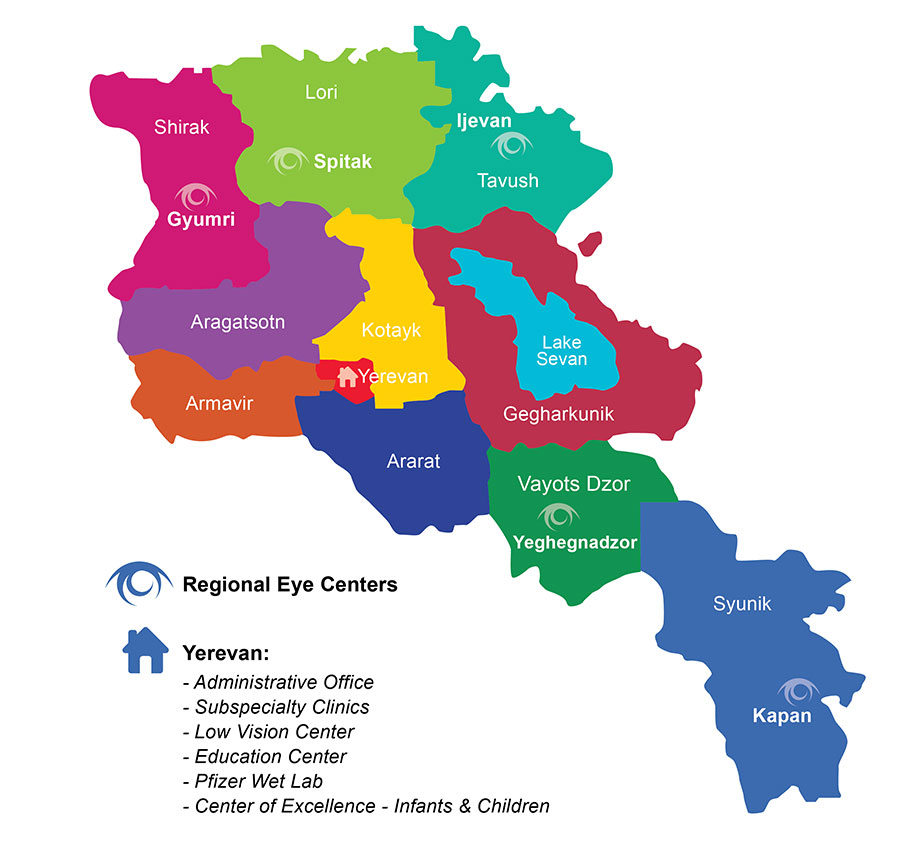Vision disorders-called refractive errors- are the most common of all vision problems. They affect the cornea and the way we see. Our eyes are very like the way a camera takes a photographs-the refractive process. The cornea and lens in your eye act as the camera lens and the retina is similar to the film. The image that your retina “sees” goes to your brain, which tells you what the image is.
The cornea bends, or refracts, light on the retina enabling us to see. When the curve of the cornea is irregularly shaped, the cornea bends light imperfectly on the retina. This is what causes a refractive error and affects your vision-myopia, hyperopia and astigmatism.
Myopia — Nearsightedness
When the cornea is curved too much, or if the eye is too long, objects in the distance are blurry. This is called myopia, or nearsightedness-you can see near, but not far away.
Nearsightedness, or myopia, is a vision problem experienced by up to about one-third of the population. They have difficulty reading highway signs and seeing objects at a distance, but can see for up-close tasks such as reading or sewing.
Symptoms and Signs of Myopia
Nearsighted people often have headaches or eyestrain, and might squint or feel fatigued when driving or playing sports. If you experience these symptoms while wearing your glasses or contact lenses, you may need a comprehensive eye examination as well as a new prescription.
What Causes Myopia?
Myopia occurs when the eyeball is slightly longer than usual from front to back. This causes light rays to focus at a point in front of the retina, rather than directly on its surface. Nearsightedness runs in families and usually appears in childhood. This vision problem may stabilize at a certain point, although sometimes it worsens with age.
Myopia Treatment
Nearsightedness may be corrected with glasses, contact lenses or refractive surgery. Depending on your vision problem, you may need to wear your glasses or contact lenses all the time, or only when you need distance vision, like driving, seeing a chalkboard or watching a movie.
Refractive surgery can reduce or even eliminate your need for glasses or contacts. The most common refractive surgical procedures involve lasers.
Hyperopia — Farsightedness
Hyperopia is a common vision problem, affecting about one-fourth of the population. People with hyperopia see far. They see distant objects very well, but have difficulty seeing objects that are near.
Symptoms and Signs of Hyperopia
Farsighted people sometimes have headaches or eyestrain, and may squint or feel fatigued when performing close work. If you get these symptoms while wearing your glasses or contact lenses, you may need a new prescription.
What Causes Hyperopia?
Hyperopia results from an eye that is too short. This vision problem occurs when light rays entering the eye focus behind the retina, rather than directly on it. The eyeball of a farsighted person is shorter than normal. Many children are born with hyperopia, and some of them “outgrow” it as the eyeball lengthens with normal growth.
Sometimes people confuse hyperopia with presbyopia, which also is a difficulty in seeing up close, but has a different cause and is age-related, usually after 40.
How is Hyperopia Treated?
Farsightedness can be corrected with glasses or contact lenses to change the way light rays bend into the eyes. You may need to wear your glasses or contacts all the time, or only when reading, working on a computer, or doing other close-up work.
Astigmatism
A normal cornea is round, with even curves from side to side and top to bottom, shaped like a baseball. With astigmatism, the cornea is shaped more like the back of a spoon and blurs and distorts both distant and near objects.
How common is Astigmatism?
Astigmatism is the most common vision problem people experience and may accompany nearsightedness or farsightedness. Two-thirds of people with myopia also have astigmatism.
What Causes Astigmatism?
Astigmatism is usually caused by an irregularly shaped cornea, but may be the result of an irregularly shaped lens, located behind the cornea. Either kind of astigmatism can usually be corrected with eyeglasses, contact lenses or refractive surgery.
Most often astigmatism is hereditary and many people are born with an oblong cornea. However, it may also result from an eye injury, from certain types of eye surgery, or from keratoconus, a disease that causes a gradual thinning of the cornea.
Symptoms and Signs of Astigmatism
Mild astigmatism may cause your vision to be slightly blurred or it may not be noticeable at all. However, uncorrected astigmatism can cause headaches or eyestrain, and distort or blur your vision at all distances.
Adults and children can have astigmatism. Approximately 25 percent or more of children may have astigmatism but are unaware because they won’t complain of the blurred vision. Because it can affect a child’s ability to see well in school and during sports, it is important to have their eyes examined regularly to detect astigmatism early.







